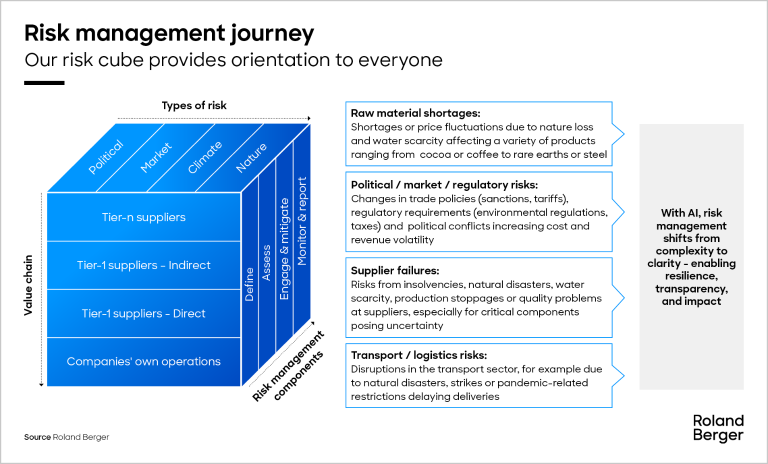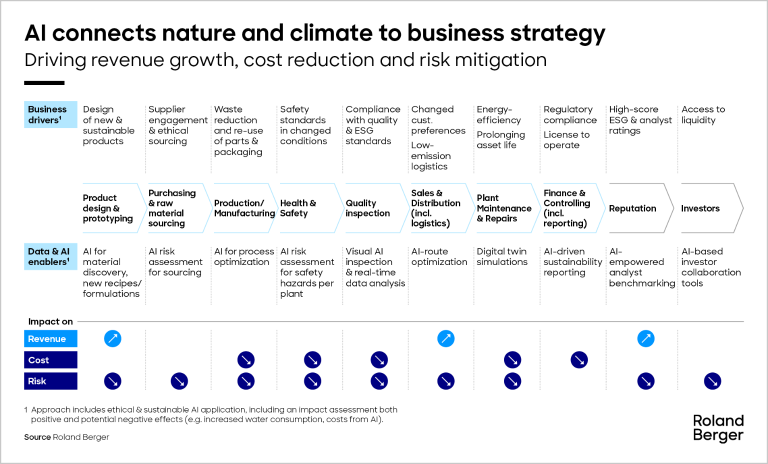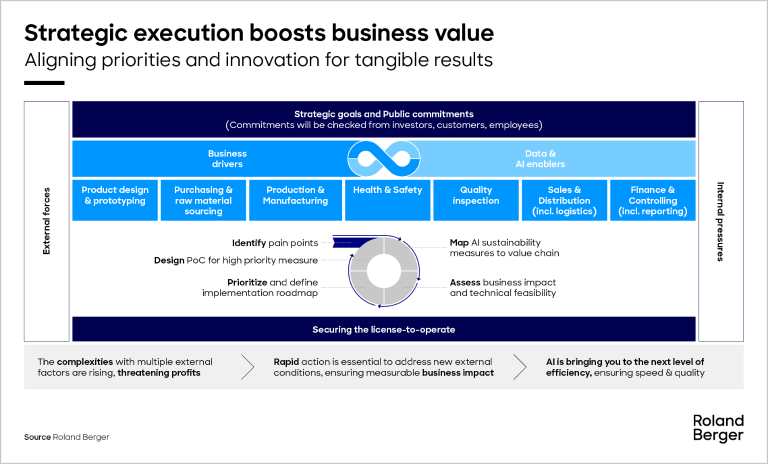While the transformative potential of agentic AI is clear, successful implementation depends on far more than advanced algorithms. Technology alone will not drive business value or resilience. To translate potential into performance, companies need to lay the right organizational and technical foundations.


Building corporate resilience
How AI can turn nature and climate ambitions into business value
Businesses today operate in an environment of constant disruption – from geopolitical volatility and shifting trade rules to climate change, nature loss and rapid technological advances. Resilience is no longer optional; it is a core requirement for survival. At the same time, sustainability is under pressure. Many companies still treat nature and climate ambitions and the related activities as a cost center, and in the current economic climate sustainability teams are being downsized and commitments rolled back. Without a clear connection to business priorities, sustainability risks being sidelined.
This pressure creates a critical opportunity. By embedding sustainability like nature and climate related ambitions directly into the business logic and linking it to measurable outcomes such as revenue growth, risk mitigation or cost reduction, companies can transform it into a source of resilience and long-term value. Artificial intelligence (AI) is central to this shift, providing the tools that make connecting sustainability and performance possible.

The forces shaping corporate resilience
Corporate resilience today is being tested by powerful external forces. Macroeconomic and geopolitical disruptions – from tariff-driven trade wars to ongoing supply chain interruptions such as the Ukraine conflict – are straining access to markets and liquidity. Investor expectations add another layer of pressure as shifting ESG ratings influence access to capital. Regulators continue to expand requirements, while the economic toll of climate damage grows through extreme weather, droughts and water scarcity. At the same time, reputational risk is intensifying as customers increasingly reject unsustainable practices.
Companies also face critical internal pressures. Risk management requires early identification of sustainability and nature-related threats, with targeted responses to limit exposure. Top-line growth increasingly depends on creating new revenue streams from sustainable, energy-efficient products, while bottom-line optimization remains under strain due to high costs and weak monetization potential. Reporting processes are resource-heavy and data is fragmented, while workforce shortages increase the need for stronger employer branding. These combined pressures show why resilience must be embedded in the organization as a source of growth – and not treated as a cost.

"AI enables companies to transform their nature and climate agenda into a source of resilience and generating long-term value - contributing to revenue growth, risk mitigation and cost optimization."
How AI generates a business impact
AI enables companies to capture value across the entire business system by building a bridge between sustainability and operational efficiency. In product design, it accelerates material discovery and creates new, more sustainable formulations. In sourcing, it supports supplier engagement and ethical procurement by assessing risks and improving transparency. Within production, AI-driven process optimization helps analyze data, uncover inefficiencies and reduce waste.
Beyond operations, AI also impacts a wide range of areas. It strengthens resilience in areas such as health and safety through hazard detection, and in quality inspection through real-time analysis. In logistics, AI-driven tools improve route optimization and adapt to shifting customer preferences for low-emission transportation. Predictive maintenance and digital twins extend the life of assets while reducing downtime. Finance and reporting functions also benefit from AI-enabled sustainability reporting and risk analytics, which ensure compliance and protect the license to operate.
The impact on businesses is multilayered: AI creates new revenue streams, cuts costs through greater efficiency and reduces exposure to operational and regulatory risks, while at the same time strengthening companies’ resilience. But how best to go about harnessing its enormous potential?

Our systematic approach
Our approach is to systematically identify strategic pain points within the organization, comparing it to best-in-class peers and internal ambitions. Based on this, we identify where action can be taken to increase AI-enabled resilience. The next step is to map AI value measures, directly or indirectly addressing the pain points, followed by an assessment of their business impact and technical feasibility. We then calculate the benefits of each measure in terms of the company’s strategic goals and the impact on its public commitments, before implementing them with the help of a roadmap.

Sign up now to receive regular insights on digital transformation and value creation via e-mail.







